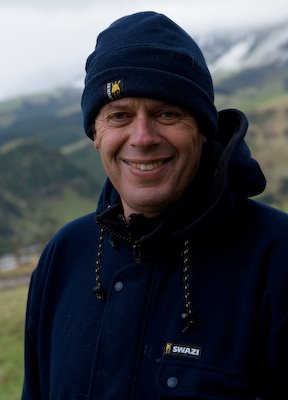
Kia Ora:
The following is a piece I wrote while in Africa, with time and aloneness to help me come to these realisations. I hope it speaks for itself.What informs me?Artists often talk about what informs them. By this they mean the influences that come to bear on their work and what they seek to say in it. Sometimes those influences are technical and process-oriented; sometimes they are to do with content. But they are always there. They inform an artist’s practice.
As a boy I was born and grew up in the country. My first memories were of the wind carrying stories and pinning them to the needles of the pines outside my bedroom window. Some nights there were many left there for me to mull over, at other times they were relatively few. My imagination was obliged to fill in the gaps. So I came to love trees for the stories they had to tell.
We lived in a house set up on a hill. I would often rise early, and go out to the kitchen to share breakfast with my father before he left for work. He would lift me onto the bench, and I would watch the sun rise away out to sea. I came to love watching the birth of a day, the transition from darkness to the white light of day. I still do.
Then we moved to the city, and these panoramas were denied me for many years. My substitute was the night sky, stars, and watching the passage of the moon across the sky. I leaned to see darkness as another side of light, that both light and shadow must coexist, in order for each to have any meaning.
Later, as I moved deeper and deeper into the arcane world of photography, I was informed by other things, or more correctly, by other artists. I remember the first time I discovered the work of Ansel Adams. It took my breath away. He understood light and darkness. I wanted to make images like him using my own country as a source. It has taken 15 years for me to find my way back to that point. The great painter Paul Klee once said:” Art does not reproduce what we see, it teaches us to see.” How true. It was when I read of Adams' contribution to the environment, how his photographs had helped to protect the wilderness, that a dim recognition began to dawn.
But there were other roads to travel. I moved through portraiture, documentary photography and commercial work, in each case informed by different artists. Costa Manos, Fay Godwin, Gary Winogrand, Arnold Newman, Robert Adams, Robin Morrison, Stephen Shore; all had something to teach me. I absorbed the lessons and moved on, in each case taking a small part of them with me.
Then a friend, who was lightening his load preparatory to turning nomadic, gave me one of his books, a series of landscapes by a Japanese photographer I had never heard of. Takashi Komatsu had travelled many miles through his country on a project to photograph his river across four seasons. The images were breathtakingly perfect and displayed a reverence that was quite moving. When I read his statement, in which he talked of his hope that it would in some way lead to them being protected, the wheel came full circle.
Photography can be many things. It originally came into being as a way of documenting the discoveries of the early European explorers and is by its very nature a documentary medium. Only later was it used for more expressive purposes. Komatsu was reaching back into a tradition as old as the medium itself. As was Adams. Their work thus tied into the very core of the medium, drew from its well. Now the light began to really glow for me.
Once more I found myself back on that kitchen bench, watching the light and shadow. Now I began to be able to decipher the notes pinned on the trees. All around me the world was changing. The beautiful, the pristine, the eternal was being ground down by the relentless mill of human intention. And I had found a photographic raison d’etre.
To photograph ugliness and despair is easy. Ugliness and despair want to be photographed; they jump up and down, their hands in the air, wanting to be acknowledged. For a reason. It is a strong photographer indeed who can take on this sort of work and not be infected by it. Beauty is so much harder to work with. It is easy to fall into the Slough of Cliché, to produce something that is decorative or derivative and half-perceived. To photograph the landscape in a way that is both reverential and influential is so much harder. A task fit for an aging knight on a rusting nag.
So there it is. If just one of my images makes a difference, if just one causes a viewer to stop and think about how precious and fragile the planet is, then do something about it, my journey will have been of value, of some use.
Tony Bridge
Namakwaland
Tuesday, August 22, 2006










